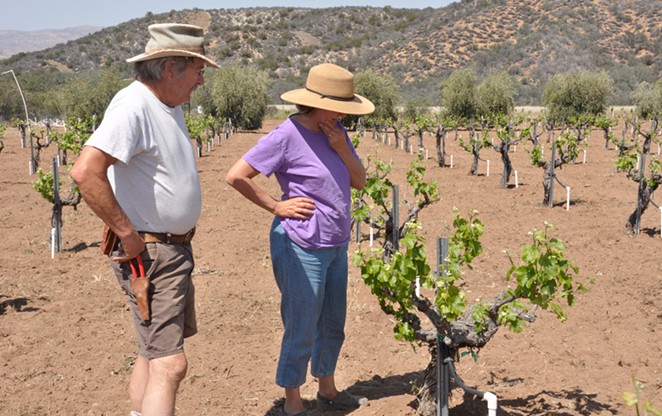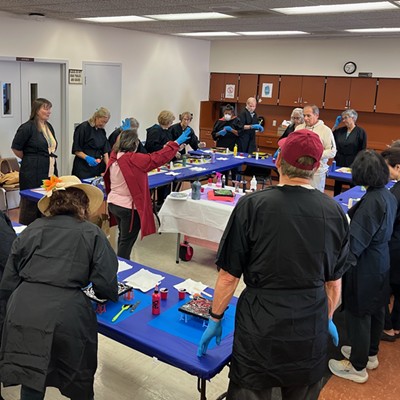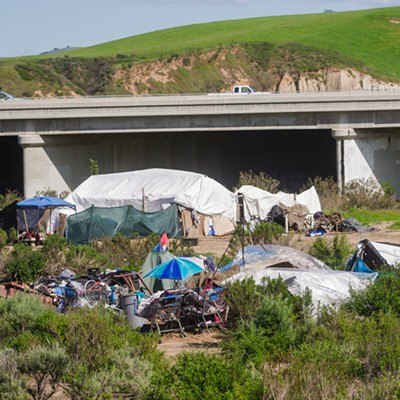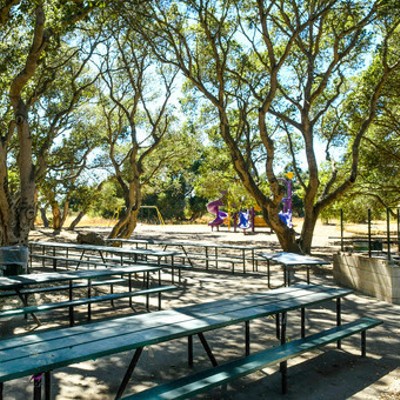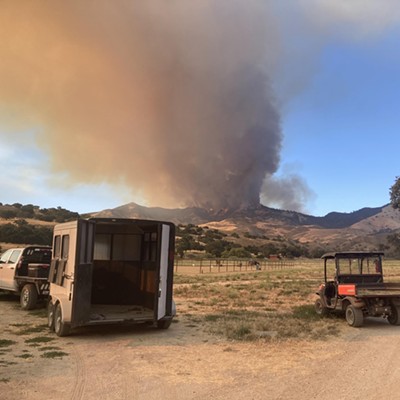As the Cuyama Unified School District stepped out of a financial crisis after years of budget struggles, Bolthouse Farms and Grimmway Farms sued the district over groundwater rights. And if the district didn’t join in the adjudication case, it risked losing water rights altogether, Superintendent Alfonso Gamino said.
“We have it in our budget for unforeseen expenses. We have more than 5 percent [in reserves], but this was an expense we weren’t counting on and how much more we’re going to have to spend is unknown,” he said. “We have to defend our water rights, but my frustration is that we can finally breathe a little bit and it’s like, ‘Here we go again.’”
The district had to hire a water attorney in late 2022 and has spent about $5,000 to $6,000 on attorney fees. Gamino said he expects the bills to be closer to $25,000 this year after hiring an expert to help the district determine its historical water usage as part of adjudication requirements.
“We don’t want to lose our water rights. Without water, we don’t have a school,” Gamino said.
The corporations first filed the groundwater rights lawsuit in August 2021 and have continued serving every Cuyama Valley resident who relies on the Cuyama Valley Groundwater Basin. Residents told the Sun that about 150 basin users are now involved in the lawsuit and are facing the first phase of the adjudication process, which is scheduled to start on Aug. 7.
Two proposed state bills could help support them through the adjudication process. If the bills pass, the judge would have to take the legislation into consideration before issuing a ruling.
“The two bills, they want to make sure they take into account the small farmers and users, like schools … and I think that’s a good thing,” Gamino said.
Two-year anniversary
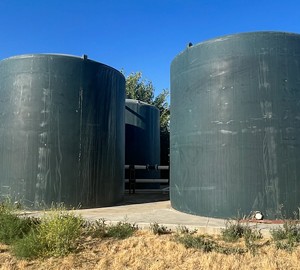
The state Department of Water Resources (DWR) wants Cuyama Valley residents to reduce groundwater pumping by 60 percent, a “drastic” reduction in water use, Cuyama resident and Condor’s Hope Vineyard co-owner Roberta Jaffe said.
The state’s recommendations came after looking at the Cuyama Groundwater Basin’s groundwater sustainability plan—a 2014 Sustainable Groundwater Management Act (SGMA) requirement. Cuyama’s is one of the 21 critically overdrafted basins in the state, and the sustainability plan is meant to maintain the basin’s health, Jaffe said.
“We are completely dependent on groundwater; we don’t have any surface rivers or water being imported,” Jaffe said. “Maintaining it and being able to retain the quality of lives we’re striving for out in the valley is really key to having our groundwater supply.”
Cuyama’s Groundwater Sustainability Agency submitted its first plan to DWR in 2020 and received approval in March 2023 with corrections, she said. During the plan’s development, residents could access the documents, attend meetings, and provide insight. However, the adjudication process closed off public access—with the exception of court hearings—and is causing confusion about groundwater use, she said.
“It creates this parallel track where, in a way, what the groundwater sustainability agency is doing and what the courts are doing is deciding how much water can be pumped out of the basin, what can be allocated, and who will get how much to pump,” Jaffe said.
Everyone will have to reduce how much water they pump, Jaffe said, adding that she thinks Grimmway and Bolthouse are trying to get around the DWR requirement with the adjudication.
“Very often, the courts will allocate based on historical use,” Jaffe said. “Those who pump the most will be allocated the most; those who caused the overdraft have the most to gain in an adjudication. Historically, the winners in the adjudication process are the big pumpers.”
Small farms and residents often end up dropping out of the adjudication because they can’t afford attorney fees for extended periods of time, and thus risk losing their water rights altogether. Jaffe said she’s spent thousands of dollars on attorney fees in the past two years even though she’s a part of a coalition of small farmers who all use one attorney to mitigate cost.
“It’s affecting us financially; it’s affecting us in that we all thought we were on this process with the groundwater sustainability plan, and now there’s so much uncertainty,” Jaffe said.
The Aug. 7 adjudication hearing will focus on the basin boundaries that were drawn by the DWR to determine how much water can be pumped in each area. Bolthouse and Grimmway filed to exclude the western end of the basin from any pumping restrictions, Jaffe said.
“They can’t just go in and say, ‘We want to be out of this.’ They have to go in with expert witnesses for why their region should not be a part of the basin or should be identified differently,” she said. “It could mean the extractions [would be] different if they are creating a different basin where they can pump as much as they want to pump.”
If the judge decides the boundaries are different, then the DWR would have to approve the changes in a separate process, which would further extend the adjudication, she said. If the DWR doesn’t agree, then it would go back to the courts.
“I’m angry. I’ve been very actively involved in the development of the groundwater sustainability plan since the beginning,” Jaffe said. “I wasn’t always happy with the outcome of some of the decisions being made, but I definitely felt a part of the process and that it was one where the community could have a voice and that we could all try to really work toward the goals of SGMA, of bringing our basin to sustainability.”
The adjudication “will render this groundwater sustainability plan powerless,” and it’s become very “convoluted” and “destructive” for the Cuyama basin, she said.
Grimmway Farms did not comment on the adjudication. Bolthouse Farms told the Sun in an emailed statement that it recognizes its responsibility to assist in achieving basin sustainability.
“The purpose of the adjudication is not to utilize more water, but rather to set fixed guidelines for all overlying landowners’ water usage going forward, as required by law,” the statement read. “Bolthouse has not sought to reduce the amount of water available to the Cuyama Community Services District nor its customers who are residents of the Cuyama Basin.”
Further protections
Assembly Bills 779 and 560 could help support disadvantaged communities like Cuyama during adjudications, Santa Barbara County 1st District Supervisor Das Williams—who represents Cuyama—told the Sun.
“The adjudications are supposed to be within the confines of the law concerning sustainability, but that’s never been fleshed out,” Williams said. “These bills are really important because they can help to clarify the roles of the agencies overseeing the Sustainable Groundwater Management Act.”
AB 779 would require the DWR to hold public meetings to explain the adjudication process to all basin users and encourage the court to have a DWR representative to provide technical assistance during the hearings, Williams said.
“It’s better for DWR to present these issues to the public so they could have an avenue for their grievances, for their concerns, for their fears,” Williams said.
AB 560 asks DWR for a nonbinding advisory determination on how an adjudication ruling could fit within a groundwater sustainability plan, he said.
“This is already supposed to be the case ... but there’s a lot of concern out there whether the judges will follow that process,” Williams said. “There’s no other reason for these large corporations to ask for adjudication unless they think they can get something bigger and sidestep the groundwater sustainability plan process.”
On July 18, the county Board of Supervisors voted 3-2 (with 4th District Supervisor Bob Nelson and 5th District Supervisor Steve Lavagnino dissenting) to write a letter of support for the two bills.
The North County supervisors agreed with the California State Association of Counties and didn’t support the bills because they believe the legislation would further complicate and lengthen adjudications.
“We are very concerned that the bill [AB 560] as currently drafted is either duplicative of existing law or may serve as a means to provide a veto power over a judicial proceeding by the executive,” Association of Counties wrote in a public comment letter. “We request that the bill be clarified to ensure that the separation of powers is honored and to ensure that provisions are not duplicative.”
The Association of Counties did not respond to the Sun’s request for comment. Bolthouse and Grimmway told the Sun in separate emails that they do not have comment regarding AB 779 and AB 560.
Both bills were amended by committees in the Senate and Assembly but weren’t yet voted on as of July 31, according to the California Legislature website.
Williams said that these two bills are important for the county to support because Cuyama residents need someone in their corner as they face “some of the richest, most powerful corporations in the state.”
“I think that the additional steps that this might take, where the divvying up of water is more clear cut, is worth having in order to avoid a gross injustice to communities like Cuyama,” Williams said.
Reach Staff Writer Taylor O’Connor at [email protected].


